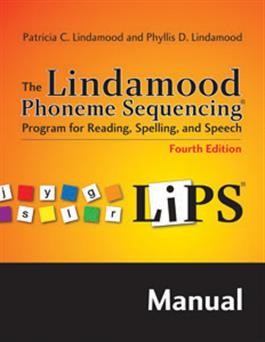The Lindamood Phoneme Sequencing (LiPS) Program for Reading, Spelling, and Speech—Fourth Edition is a comprehensive multisensory program that uses explicit, systematic instruction to develop phonological awareness, decoding, spelling, and reading skills. The goal of LiPS is to develop fluent readers and competent spellers. The LiPS Program steps are: Setting the Climate for Learning, Identifying and Classifying Consonants, Identifying and Classifying Vowels, Tracking Simple Syllables and Words, Basic Spelling and Reading, Learning Sight Words and Expectancies, Tracking Complex Syllables and Words, Multisyllabic Words, and Reading and Writing in Context. To teach sound–letter associations, the LiPS tasks progress from articulatory movement to sound, then to letter. Through guided discovery techniques, students explore the physical movements involved in producing sounds and learn to hear, see, and feel the physical characteristics of sounds. This in-depth knowledge leads to the student’s ability to understand how words are constructed and to self-correct—essential skills for independent reading and spelling.
For more than 40 years, the LiPS program has successfully addressed the reading difficulties of a wide range of individuals, including students with functional speech-language delay, second language learning, dyslexia, autism, apraxia, pervasive developmental delay, traumatic brain injury, and stroke. The program’s use with students in grades K-3 has been shown to significantly reduce the need for remedial reading instruction. LiPS can be used with individuals, small groups, and classrooms. It can be used with all ages, from preschool to adult.

 Proud to be Canadian
Proud to be Canadian










